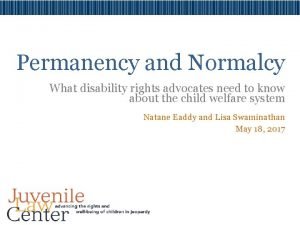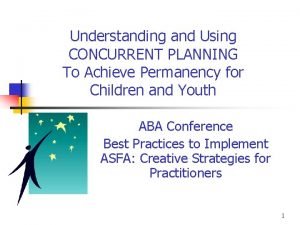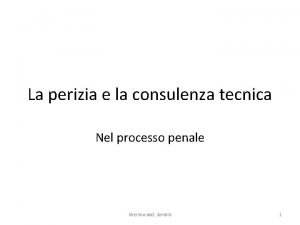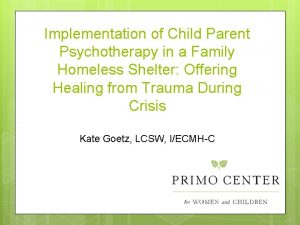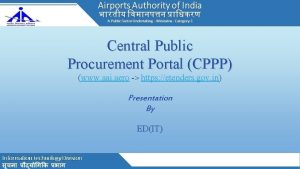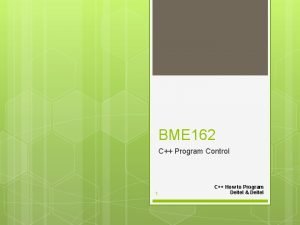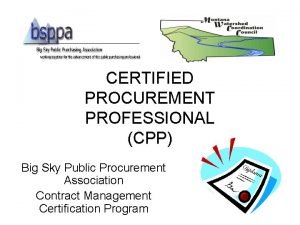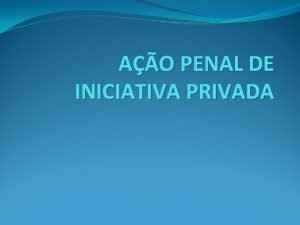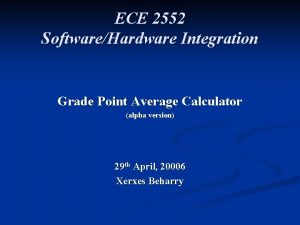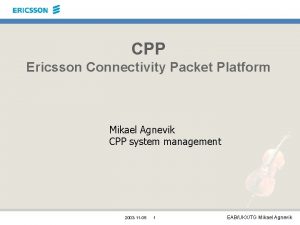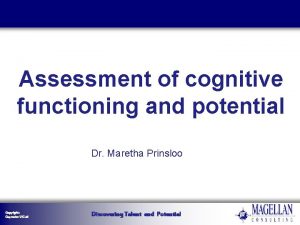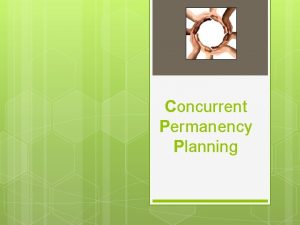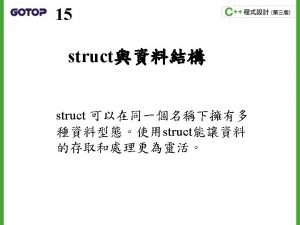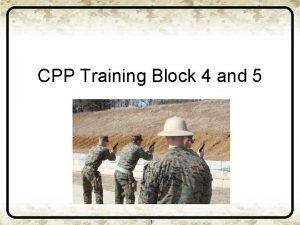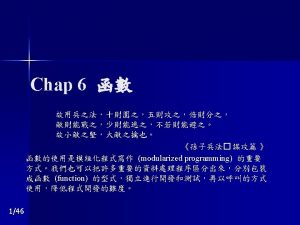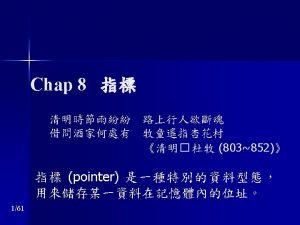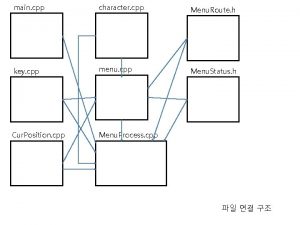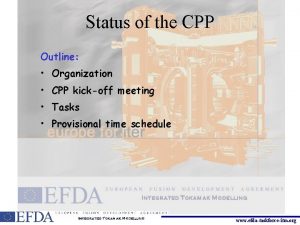Concurrent Permanency Planning Concurrent Permanency Planning CPP The
















- Slides: 16

Concurrent Permanency Planning

Concurrent Permanency Planning (CPP) The process of working towards reunification while at the same time planning an alternative permanency plan in the event that reunification efforts are unsuccessful.

Concurrent Permanency Planning Plan A = is reunification Plan B = must be one of the following federally approved permanency goals in order of preference: adoption, guardianship, permanent placement with a fit and willing relative, or another planned permanent living arrangement (APPLA)

CPP: Plan A & Plan B Parents informed of concurrent permanency planning process from day one. Parents must have opportunity to provide input on Plan B is only initiated after court determines reunification is no longer the goal. Goal is timely permanency for children in care.

Hint: Discuss permanency plans with parents and placement caregivers early and often. Ensure that foster parents/caregivers are involved and informed. Always let parents know exactly when and how services/action steps are to be completed.

Concurrent Permanency Planning Policy Guidelines See 722 -9 for guidelines for Permanency Planning Goal recommendations. Permanency Planning Goal recommendation must be documented in the “Recommendations to the Court” section of every USP. Recommendations to change the Permanency Planning Goal do not require a Permanency Planning Hearing.

full disclosure: The process of being open and honest with all parties (birth family, foster family, attorneys, etc. ) about the concurrent permanency planning process. All parties are informed that there will be an alternative permanency plan for the child if the child can not safely return home within a reasonable amount of time. The birth parents must clearly understand what is required in order for the child to safely return home. They must also understand that if they do not meet the expectations required in a reasonable time frame, the agency will make a recommendation to the court to implement the alternative permanency plan.

Full Disclosure: Provide honest and open feedback. Child safety concerns must be addressed. Clearly present timeframes and expectations. Communicate parental rights and responsibilities. Structured Decision Making process must be followed.

CPP: Parent/Child Contact Guidelines Ages 0 to 2 years of age: 3 visits per week Ages 3 to 5 years of age: 2 visits per week Ages 6 years and up: 1 visit per week

Hints: Parent/Child Contact Tips Ask relatives/foster parents to supervise additional visits. Utilize community activities/events to provide additional visits. Include parents and foster parents in parenting time plan. See visitation guideline handouts for additional ideas.

Examples of Parent/Child Contact Medical/dental visits. Early On services for infants. Extracurricular/Sporting activities. Family Counseling. Church. School lunch/daycare feedings. Transportation. Foster home. Family Team Meetings.

diligent relative search: Child Welfare staff must complete a diligent search for relatives or non-relatives for child(ren) in foster care. The relative search must be initiated by the CPS worker upon removal. The FC worker must continue quarterly search and engagement efforts until the child obtains legal permanency. Specific guidelines for relative search requirements are outlined in FOM 722 -6 and PSM 715 -2.

CPP: Relative Search Tips Relatives can be utilized for visitation supervision, transportation and respite. All relative search efforts must be documented using search forms and in Social Work contacts. Continuous engagement of relatives

CPP: Relative Search Forms DHS 987 – Relative Documentation: Relative contact information DHS 988 – Relative Search Information: Additional relative search contacts DHS 989 – Relative Response Form: How relatives want to be involved. DHS 990 – Relative Notification DHS 991 – Diligent Search Checklist

frontloading services: Foster Care (FC) worker makes appropriate service referrals for the family as soon as possible after the child enters foster care, but no later than 30 days after the initial placement. Parents should be encouraged to participate in services. However, parental compliance with service plan is voluntary until court disposition unless the court orders otherwise [MCL 712 A. 13 a(8)(c)]. Declining to participate, prior to the dispositional hearing, will not be determined as failure to comply with the supervising agency FOM 722 -6.

CPP: Front Loading Services Tips Delays in service provision must not be based on “favorite” providers. Requires close collaboration with courts, family, caregivers and service providers. Clear understanding by parents that a time sensitive matter.
 Permanency plan example
Permanency plan example How does concurrent planning support permanence
How does concurrent planning support permanence Kolesarski izpit znaki policista
Kolesarski izpit znaki policista Perizia cpp
Perizia cpp Cpp triangle of explanation
Cpp triangle of explanation Ess portal aai
Ess portal aai Cpp bme
Cpp bme Cpp certification procurement
Cpp certification procurement Artigo 31 cpp
Artigo 31 cpp Wipro unix assignment
Wipro unix assignment Cpp gpa calculator
Cpp gpa calculator Cpp academic senate
Cpp academic senate Cpp ericsson
Cpp ericsson Cpp znaki
Cpp znaki Cognadev cpp assessment example
Cognadev cpp assessment example Specialcourseinfo
Specialcourseinfo Cpp formula
Cpp formula
